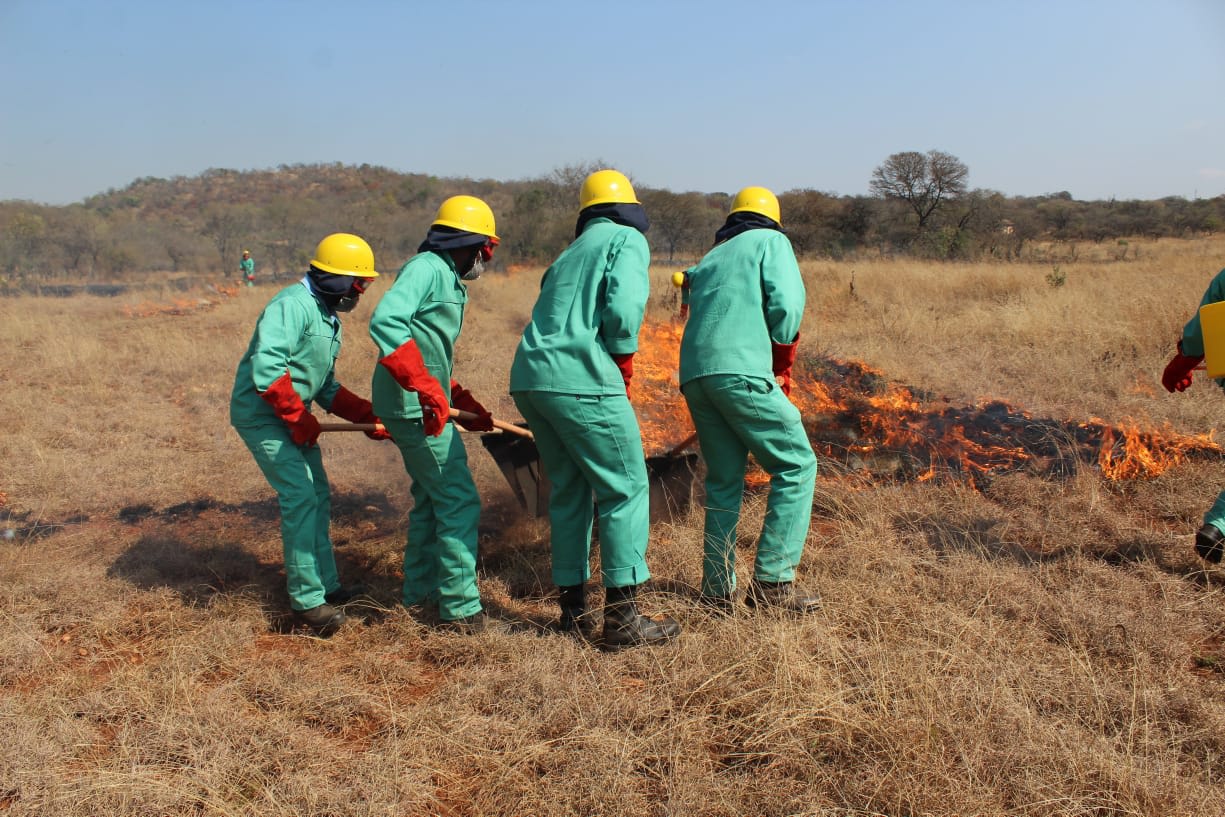Fire plays an important role in the development and maintenance of flora and fauna in Zimbabwe. Fire can be a great servant, but however a bad master on the other hand. The yearly cost in the loss of lives, livestock, plantations, livelihoods and millions of dollars is increasing. Therefore, providing veld and plantation fire protection with the old way will no longer work. The face of fire and plantation forest firefighting in Zimbabwe has changed in the last twenty years. Plantations now have new settler neighbours and the challenging economic environment to navigate. Fire fighting that traditionally involved protection to private and state plantations, now involves local traditional leaders commonly known as madzishe/amakhosi, the establishment of district fire committees, the use of cutting edge technology such as drones and satellite imagery for monitoring fires, the employ of sniffer or tracking dogs, the use of motorbikes for security patrols and the roll out of specialised technical fire training for foresters and firefighting teams. I had the opportunity of chatting to the Timber Producers Federation Chief Executive Officer, Mr Darlington Duwa about what he considered as the industry top-ranked risks for the 2021 fire season and the possible mitigation measures:

Fire break preparation in progress
According to Mr Duwa, “the biggest cause of fire in Zimbabwe for plantation forests in particular for the year 2020 was arson”. He further commented that “This is what should not be repeated this year given the fact that Zimbabwe experienced a lot of rainfall and vegetation growth has been luxurious leading to heavy flammable fuel when dry”. The reasons behind the ignition of arson fires generally vary from one district to another but in the main include timber theft, grazing pastures for livestock, disgruntled workers, and the creation of tender opportunities to harvest or clear-fell the burnt timber.
Some forestry companies are making use of drones to monitor hot spot areas
Mr Duwa further asserted that “Other factors that caused fires include bee smoking in plantations and land preparation by forest neighbours”. Some local foresters who weighed in on the matter stated that new settler farmers burn fires to create a “vacuum” or TUP, that is temporarily unplanted land to extend crop fields. Many of these fires occur around October at the peak of the dry season and are the cause of anxiety and stress among many foresters. Another factor to ponder is the shortage of forest labour, which arise due to locals discounting plantation wages as being very little and not meeting basic household needs. As a result of the foregoing, some companies are not able to complete clearing internal fire breaks and buffer zones which further exposes non-complying plantations to run-away fires should things get out of hand.
To mitigate against these fires, Mr Duwa proposed that, “there is need to enact stiffer penalties to arsonists”. He further commented that “the Forest Act Amendment Bill provides opportunities to amend the penalties section of the Forest Act to deal with arsonists”. Mr Duwa also indicated that “a mandatory jail term is recommended”. He also stressed the need to intensify awareness campaigns to educate communities on fire prevention, management and firefighting. The industry is also investing in firefighting equipment such as fire tenders, bakkies, bakkie-sakkies and also strengthening communication (two-way) radios for use in firefighting, concluded Mr Duwa.
Investment in new fire tenders and equipment is the key towards reducing lost area to fires.
The Timber Producers Federation is the forestry sector’s mouthpiece and representative body. The Timber Producers Federation association comprises more than 15 timber grower companies and saw millers in Zimbabwe. The timber industry social and economic contribution includes a 3-4% contribution to GDP and the employment of plus-minus fifteen thousand direct and indirect labour. In terms of equity, the private sectors own 60% and the State 40%.






